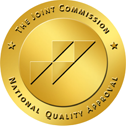What is Seasonal Affective Disorder?
While it is true that some people have a sudden urge to sleep and relax at home during the winter months or feel saddened at the onset of darker, colder days, those with seasonal affective disorder experience much more severe feelings. Seasonal affective disorder (SAD) is a type of disorder in which a person experiences a drastic change in their overall mood during the fall and winter seasons of the year. In most cases, depression, anxiety, and fatigue occur. If symptoms such as depression do occur, it may be necessary to seek depression treatment at one of the many depression treatment facilities. This disorder rarely occurs in children and is most common in younger adults.
Another name for seasonal affective disorder is winter depression. Some people, rather than having a mood change in the winter months, experience mood changes in the summer months. The name for this condition is reverse seasonal affective disorder. This disorder is much rarer however. In both seasonal affective disorder and reverse seasonal affective disorder, depression occurs. This debilitating condition is especially difficult to overcome. Treatment for depression may be one way for someone with seasonal affective disorder to treat their condition. Help can be found at a variety of depression treatment facilities across the country.
A greater percentage of those with seasonal affective disorder are women. Working long hours in an office (especially one without a window) or living in certain areas of the world make a person more susceptible to seasonal affective disorder. Also, genetics may have some affect on the presence of seasonal affective disorder. In the United States today, approximately 1/2 of a million people experience seasonal affective disorder.
Causes of Seasonal Affective Disorder
What causes seasonal affective disorder? The specific cause of this depressive disorder remains unknown, however, reasons and risk factors may include:
- Serotonin levels in the brain. Serotonin is a chemical in the brain which affects a person’s mood. Some say that a lack of sunlight, due to the shortened hours of daylight, causes a decrease in serotonin levels and thus causes seasonal affective disorder.
- Location. Living in a northern location (places with higher latitude) may cause seasonal depressive disorder.
- The hormone melatonin. This hormone is related to the sleep a person gets. Some suggest that due to a decrease of daylight hours, melatonin increases, causing greater fatigue and possibly depression.
- Change in circadian rhythm. Circadian rhythm is a rhythm in a person’s body that tells them when they should be going to sleep and when they should be waking up. It has been thought that the lower levels of sunlight in the winter throw off the circadian rhythm in some people, thus causing seasonal affective disorder.
- Genetic inclination. Due to genetics, some people may be more inclined to developing seasonal affective disorder than others. People who have a specific family history of seasonal affective disorder may be even more susceptible to this depressive disorder.
If you or your loved one experience seasonal affective disorder, there is an excellent chance that depression will also be involved. Depression plays a large role in affecting the mood of a person. Seeking treatment at a depression treatment facility may help to reduce any additional symptoms of seasonal affective disorder. Additionally, by experiencing depression treatment at a depression treatment center, the overall rate of recovery may improve.
Signs/Symptoms of Seasonal Affective Disorder
Symptoms of seasonal affective disorder include:
- Depression
- Presence of headaches
- Craving sweet foods
- Excessive sleep
- Thoughts of suicide
- Loneliness
- Drastic mood swings
- Fatigue
- Complications at work
- Disinterest in social activities
- Low energy
- Drug abuse
- Increase in weight
- Sensitive to rejection
- Guilty feelings
- School complications
- Anxiety
- Poor concentration
- Feeling hopeless
In the case of reverse seasonal affective disorder, weight loss due to lack of an appetite, insomnia, and a higher sexual drive are common. Additional problems which may arise are similar to those which occur in the case of winter seasonal affective disorder.
How can seasonal affective disorder be treated? The most popular form of depression treatment for this disorder is light therapy. Light therapy involves exposure to light from a special light box for a certain period of time every day. Light therapy may also be called phototherapy. Medication, exercise, and healthy eating are a few other ways to treat seasonal affective disorder.
Drug rehab at treatment for drug abuse center may be another valuable form of treatment. Drug treatment at a drug and alcohol rehab center can be very effective in treating people with drug addiction as well as other problems such as seasonal affective disorder. A variety of different therapy types are offered drug treatment centers, these therapy sessions may help a person to overcome feelings of hopelessness, anxiety, and loneliness.




